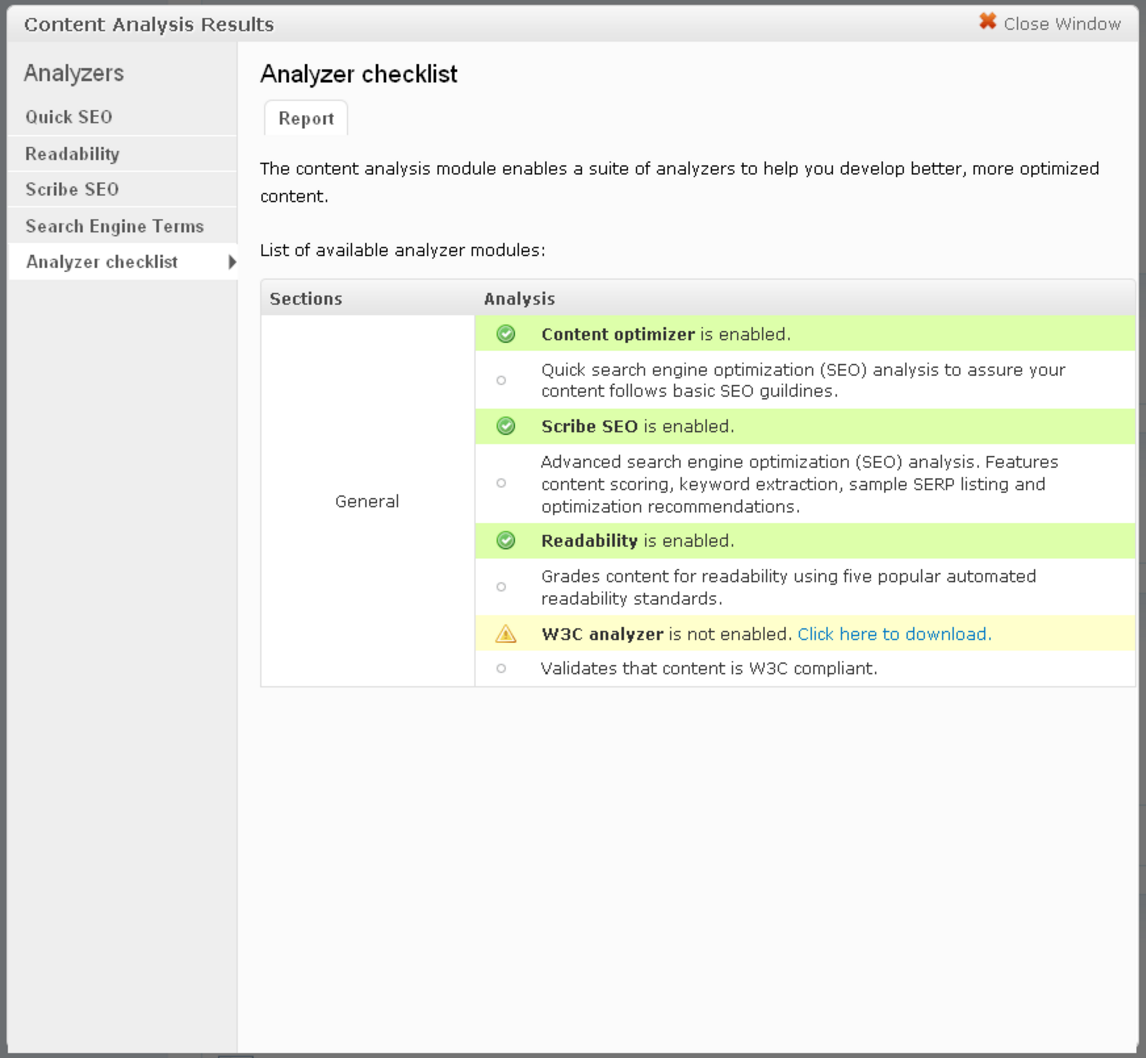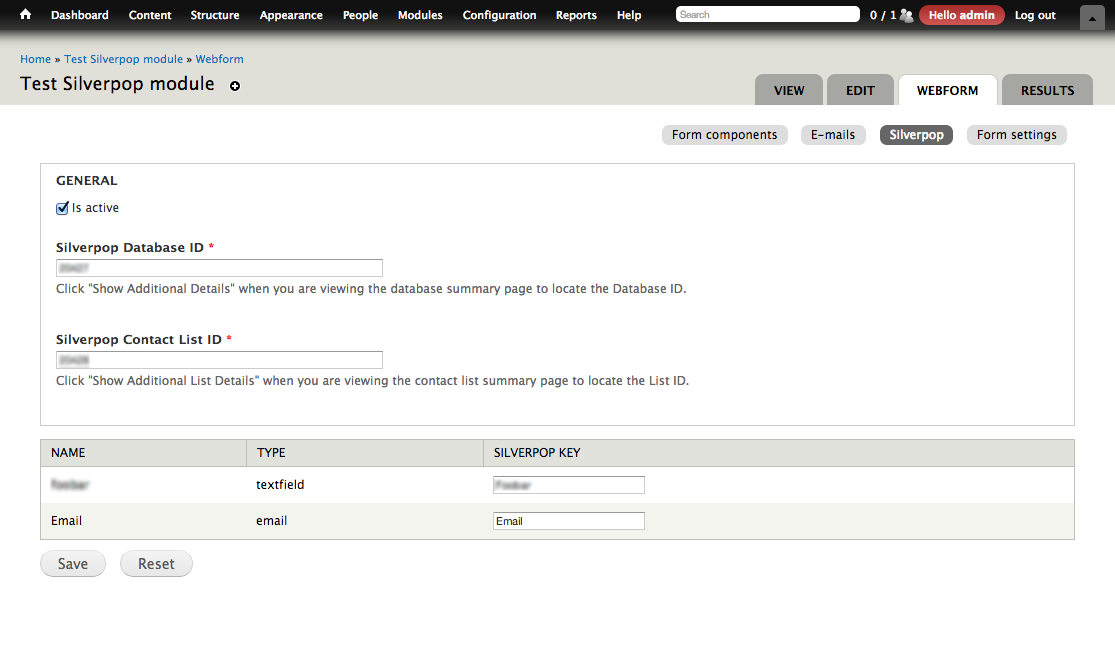Complete Content Marketing with Drupal
This article was last updated in January 2022.
At its most basic, content marketing is about maintaining or changing consumer behaviour. Or more elaborately, it’s “a marketing technique of creating and distributing valuable, relevant and consistent content to attract and acquire a clearly defined audience -- with the objective of driving profitable customer action.” The operative word here, of course, is ‘valuable’ -- it’s what separates content marketing from broader streams of advertising or marketing. How can you recognize the difference? If people actively seek it out and want to consume it rather than avoid it, it’s content marketing.
Your Customer’s Buying Cycle
Now that we understand what content marketing is, let’s look at why it’s important. First, we need to understand the four steps of a typical customer’s buying cycle:
- Awareness. Your customer may have a need, but they may not be aware that there is a solution;
- Research. Once your potential customer is aware that there is a solution, they will perform research to educate themselves;
- Consideration. At this point, your customer starts comparing different products for quality and price; and,
- Buy. Finally, your customer makes their decision and moves forward with the transaction.
Traditional advertising and marketing are great at responding to the second and third steps in the buying cycle, but content marketing works as an early intervention. It connects with potential customers before they may be aware of the solution to their need.
Your Customer’s Needs are Your Business’ Needs
The entire marketing process, including content, drives towards three goals:
- Customer loyalty and retention;
- Activating latent demand; and,
- Driving conversions.
No single piece of content can achieve all three of these goals, no matter how compelling. Instead, all of your organization’s content must be planned and executed strategically to advance towards your goals as a whole. As David Zbar, Senior Vice President, Digital at Marshall Fenn Communications argues, “Content marketing will become increasingly more important for businesses. If you can change a person’s behaviour, meet their needs, and provide value at every turn along their journey, you have a great chance of earning their loyalty and their business.” And while it’s true that content marketing should prioritize your customer’s needs over your business’, it’s by meeting your customer’s needs that you’ll best meet those of your business. For example, a brand is able to influence their customer’s behaviour by delivering content that recognizes and addresses their specific needs -- and that establishes their product or service as the solution. This happens by:
- Building an emotional connection;
- Inspiring feelings;
- Building trust; and,
- Giving a positive user experience.
Content Marketing Done Right with Drupal
Finding the right content management system (CMS) for your team can be a challenge at best. Some are limited in their flexibility, options, workflows, and in the types of content that can be created with them for your website. Balancing your needs with your CMS’ control is essential to empowering your marketing team to connect with your customers and execute your content marketing strategies online. In our experience, we have found that Drupal strikes this balance best and is the solution that we most often recommend. And the ability to expand the CMS by adding modules allows us to customize both the administrative and customer’s user experience. Here are some of the modules that can augment and enhance your content marketing efforts on your Drupal website.
Content Analysis

The current list of compatible analyzing modules includes:
- Quick SEO -- provides a quick and easy analysis of content to help your site rank better in the search engines for a specific keyword;
- Scribe SEO -- provides advanced analysis of content to help your site rank better in search engines, as well as keyword extraction and guidance;
- Readability -- designed to help copywriters and editors develop more consistently readable content by performing five popular automated readability tests that provide a grade level equivalency of the difficulty of a page's readability; and,
- Keyword Research -- provides intelligence to help you explore, analyze, and select stronger keyword phrases for your content and enables you to quickly and easily organize your targeted keywords and tag pages.
HubSpot

HubSpot is an inbound marketing software platform that helps attract visitors, convert leads, and close customers. Their module integrates with Webform and the HubSpot API to submit directly to HubSpot's lead management system. For example, a Webform-based contact form on your website can send its data to HubSpot, where you may already track potential clients and contacts; or a Webform-based e-newsletter signup could send the lead to HubSpot's targeted marketing system, letting you automatically deploy your pre-existing email campaigns.
Panels
Panels allows website administrators to create custom layouts for different uses through a drag-and-drop interface. The content manager then lets you enter content within your layout and integration with other systems allows you to create nodes, landing pages, and even override system pages such as taxonomies and nodes to enable finely tuned customization of your website.
SEO Checklist

SEO Checklist breaks the tasks down into functional needs like title tags, paths, content, etc. and next to each task are links to download any required modules from drupal.org and to the proper administration section of your website to properly configure the settings. SEO Checklist tracks also tracks your progress by time-stamping each item as you complete it and generates simple status reports to share with your team.
Silverpop Engage

Engage offers sophisticated marketing automation product capabilities that leverage behaviours, maximize campaign effectiveness, help to and drive revenue.
Views
One of the most popular Drupal modules, it allows administrators and designers to create, manage, and display lists of content. Each list managed by Views is called a "view", and the output of a view is called a "display". Displays are provided in either block or page form, and a single view may have multiple displays. Some examples of how Views can help you include:
- Re-sorting the default front page view;
- Re-sorting the default taxonomy/term view;
- Restricting /tracker to posts of a certain type;
- Customizing the way the 'article' module displays articles;
- Display a block with the five most recent posts of a particular type;
- Provide 'unread forum posts'; or,
- You want a monthly archive similar to the typical Movable Type/Wordpress archives that displays a link to the in the form of "Month, YYYY (X)" where X is the number of posts that month, and displays them in a block.
Widgets

It adds an interface that’s similar to core’s image styles, helping you to organize and configure various widget elements more easily. These elements can then be assembled into widget sets, which can be reused throughout the site via blocks and other render displays. The Widgets module is primarily a user interface API, so it only includes generic markup widgets. You can add new custom widgets using the widget definition admin, or enable modules that provide widgets such as the Social Media and Service Links modules.
Workbench
Workbench provides overall improvements for managing content that Drupal does not provide out of the box. The module incorporates contributing modules, which must be installed separately to enable their functions:
- Workbench Access -- provide hierarchical permissions across "Sections" of your website. You can use menus, taxonomy, or create your own hierarchical structure for controlling access to a piece of content;
- Workbench Moderation -- a flexible system that provides default workflow states like Drafts, Needs Review, and Published, or you can change these states to suit your editorial needs; and,
- Workbench Media -- adds a workflow for creating media just as you would any other content type.
As well as features on its own:
- Hierarchical permission inheritance by ‘Sections’, not just content types;
- Extensible workflow states;
- Single repository for media management; and,
- Modify live content without publishing changes immediately.
Engage Your Customers with Compelling Content
Consumers are increasingly avoiding traditional advertising and marketing, whether by browser-based ad blockers, DVRs or downloading ad-free content, or simply ignoring it. Smart marketers understand that there is a better way to engage their customers -- content marketing. By creating and curating compelling content that adds value for their customers, marketers can influence the behaviours of their now-captive audience. By its nature, content marketing is non-disruptive. Instead of pitching a hard-sell, content that educates and informs customers is delivered earlier in the buying cycle. To ensure that your marketing efforts are targeting your customers, integrating content marketing modules into your Drupal website will help build the platform to deliver the right message in the right way.







